The banks of the Seine would not be the same without the established Bouquinistes of Paris.
The booksellers and their green-painted boxes have become one of Paris’s many iconic symbols.
It was once said that the Seine is the only river in the world between two bookshelves!
Always in the open air during any weather “by the wind, the rain, the frost, the snow, the fog, and the great sun, that they end by looking much like the old statues of cathedrals” (Anatole France, The Crime of Sylvestre Bonnard).
What are the Bouquinistes of Paris?
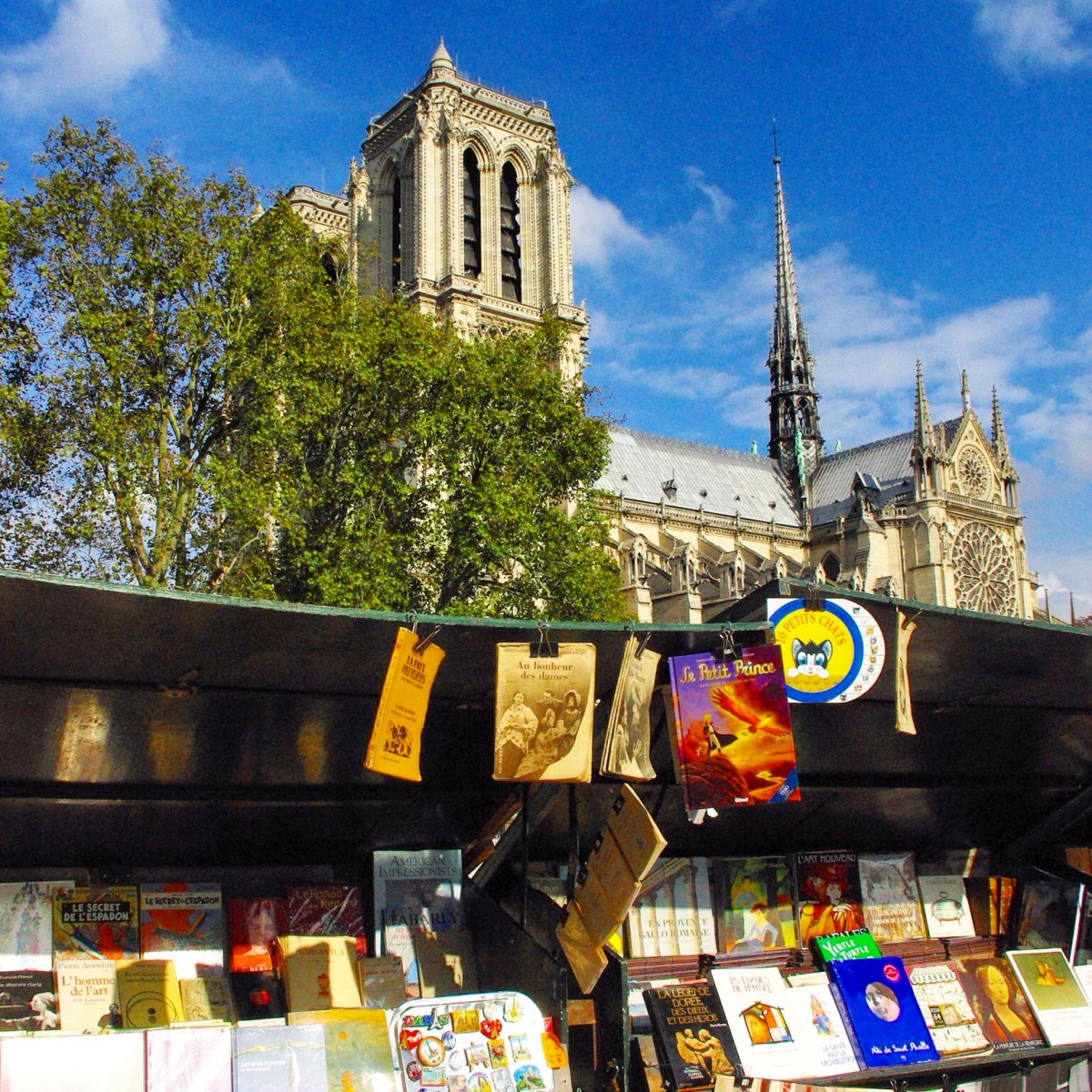
Spanning three kilometres, from the Quai du Louvre to Pont Marie (right bank) and from the Quai Voltaire to the Quai de la Tournelle (left bank), the booksellers display used and antiquarian books, as well as old magazines, stamps, souvenirs, magnets, posters and postcards in open green boxes.
These 900 boxes, alongside the Seine, contain some 300,000 books and are run by 240 bouquinistes.
They are open several days a week (depending on the weather) from 11.30 am to sunset.
The “vert wagon paint” colour of the boxes refers to the dark green of old train carriages.
The Bouquinistes of Paris: a bit of history
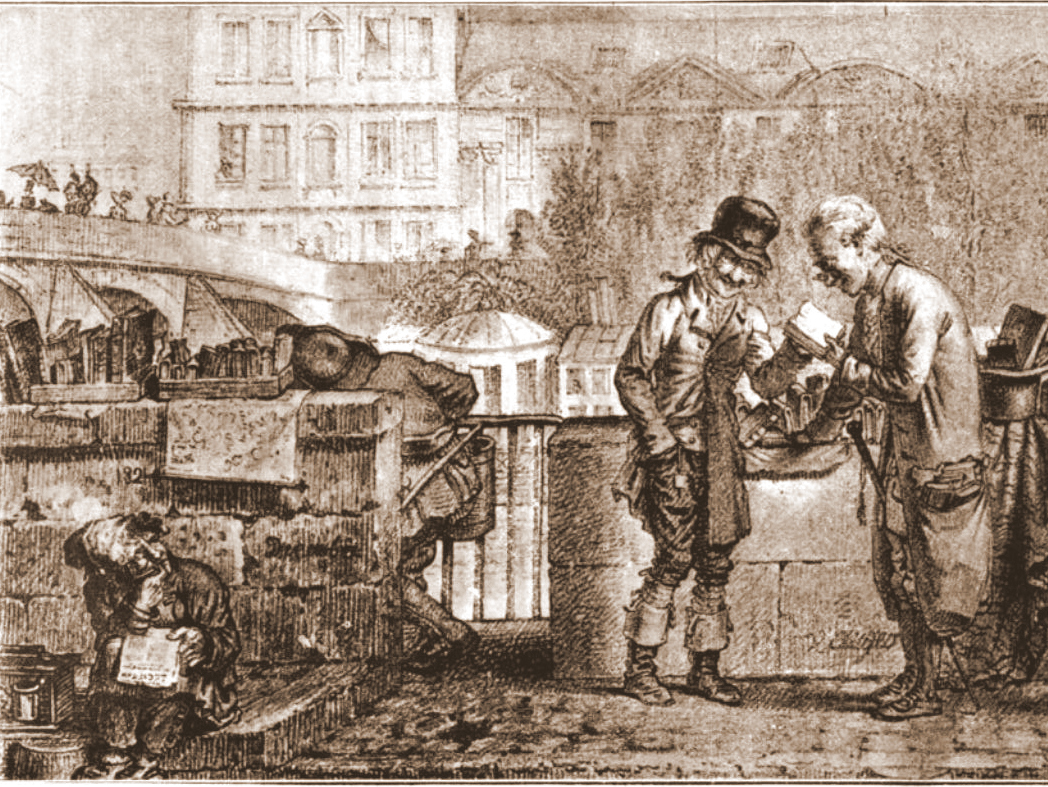
In the 16th century, peddlers called “libraires forains” wandered along the Seine banks.
In 1557, when the Wars of Religion raged, they were accused of being thieves who sold forbidden Protestant pamphlets targeting the government and the church.
With the opening of Pont-Neuf at the beginning of the 17th century, the number of booksellers who held the first public readings accompanied by musical entertainment and open-air shows increased.
They used wheelbarrows to transport their books and sold them from trays fastened to the parapets of the bridges with thin leather straps.
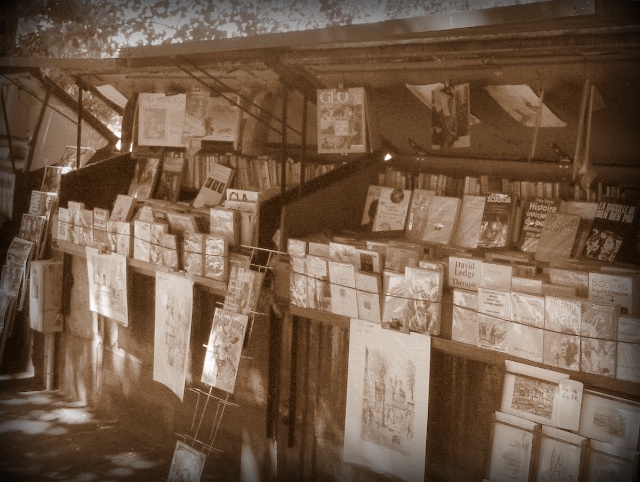
The term “bouquiniste” [boo-keen-eest] was first mentioned in the dictionary of the Académie française in 1789.
It is believed to derive from the Dutch word “boeckin” meaning “small book”, or the German word “Buch”. The word “bouquin” in French is synonymous with “livre”.
The French Revolution profoundly affected the book trade in Paris, which until then had been monopolised by nobles and clergymen.
The booksellers’ business really took off when churches, mansions and châteaux were dismantled and emptied of their contents.
Many books that had once belonged to the rich found their way to the Bouquinistes stalls.
Thus, these entrepreneurs, who had established themselves on low-cost sites on the banks of the River Seine, found their business expanding at the expense of established bookshops.

In 1859, second-hand booksellers were granted the right to establish their business at fixed points along the banks of the River Seine by paying a concession fee.
The Bouquinistes were each allocated 10 metres of railing to trade with opening hours from sunrise to sunset.
In 1891, the sellers were authorised to attach their boxes to the railings permanently.
During the Paris World Exposition in 1900, more than 200 Bouquinistes were identified along the Seine.
In 1930, the dimensions of the green metal boxes were fixed for all booksellers.
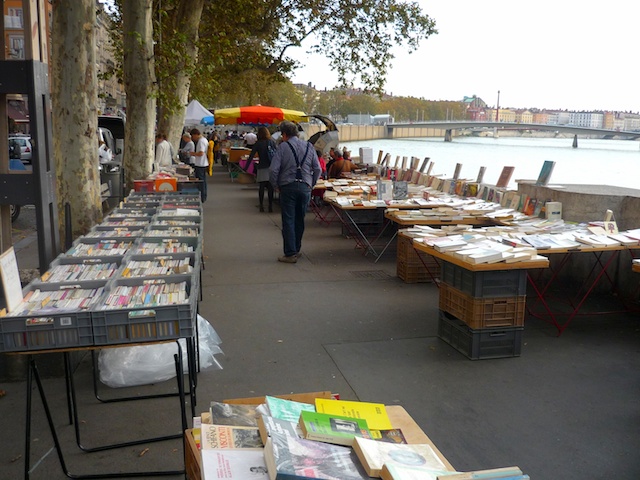
The Bouquinistes model has been exported to other cities, such as Lyon, where bookstalls operate on Quai de la Pêcherie alongside the River Rhône.
The Bouquinistes of Paris: A Threatened Activity
Therefore, the spread of the Internet threatens the Bouquinistes’ activity.
Old book sales are declining as fewer people read paper books and magazines.
To survive, they have recently diversified their offerings to include tourist merchandise (limited to 1 out of 4 boxes).
The creation of a pedestrian precinct along the lower banks of the River Seine partly explains the Bouquinistes’ revenue loss.
The noise generated by cars, buses, and trucks makes the upper banks less attractive.
Bouquinistes Stay: A Paris 2024 Decision
The Parisian bouquinistes recently faced a significant difficulty.
As Paris gears up for the 2024 Olympics, a proposal was made to relocate its cherished book stalls for the duration of the opening ceremony.
However, in a turn of events announced on Tuesday, 13 February 2024, the Elysée Palace declared that these custodians of written culture would, after all, remain at their posts by the water’s edge.
A presidential about-turn
This about-turn has been credited to President Emmanuel Macron‘s decision, which followed deliberation over the stakes in moving the bouquinistes.
Their resistance to temporarily vacating the quays, driven by concerns over the vulnerability of their setups and the financial hardships caused by an extended cessation of their trade, influenced the decision.
The government thus opted to keep them in place, acknowledging that no satisfactory alternative had been found.
Contrary to initial plans, the Seine’s “upper quays” will not be used as spectator spaces during the opening ceremony.
This outcome, though necessitating some adjustments, underscores the value placed on these picturesque figures of the Paris landscape.
The bouquinistes, prepared to take legal action to secure their position, have seen their situation stabilise without resorting to such measures.
The indispensable role of the bouquinistes of Paris
This compromise highlights the indispensable role of the bouquinistes in the cultural fabric of Paris.
Situated along the banks of the Seine, they continue to enchant passersby and book enthusiasts alike.
Thanks to the decision on 13 February, their enriching presence will be preserved, allowing tradition and history to coexist with the glamour of the Olympic Games.
It’s a testament to their significance, despite the logistical challenges posed by hosting an event of international scale.
Rules to abide by
The Bouquinistes follow a list of rules, particularly article 9 of the by-law dated October 1993, signed by the then mayor of Paris, Jacques Chirac.
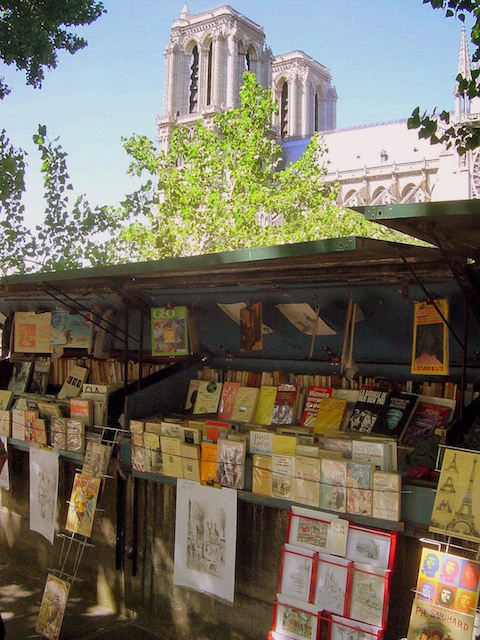
The boxes used by bookstores will be of a type approved by the Administration with an external bodywork determined by the dimensions below, for a maximum length of 8.6 metres:
- Length: 2 metres
- Width: 0.75 metres
Height:
- Seine side: 0.6 metres
- Shore side: 0.35 metres
(These dimensions are for closed boxes, lids included).
During use, the upper edge of the opened box should not be more than 2.1 metres above the ground.
To keep the tradition based on vintage books, the City of Paris allows no more than one box of souvenirs for every three boxes of books.
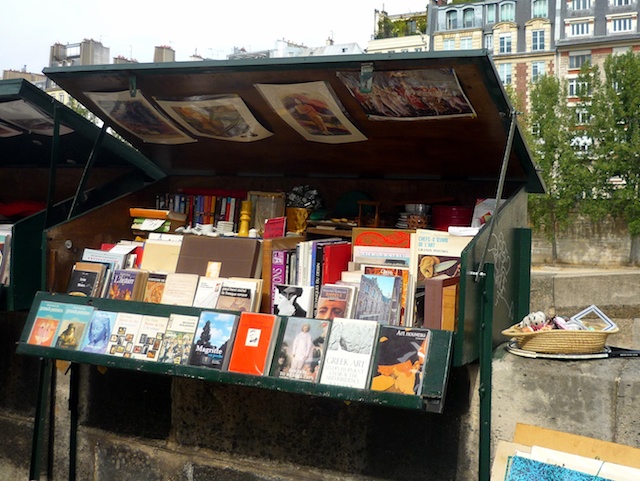
Today, four boxes are allocated to each bookseller.
The annual rent of €100 is based on the wall length on which the boxes are fixed rather than the area on the pavement.
Seniority will be a decisive factor in getting the most popular and coveted spots on the river banks around Notre Dame.
Becoming one of Paris’s Bouquinistes, it could take up to eight years to be on a waiting list.
The bookseller is responsible for maintaining the metal boxes (including the green paint).
At night, their goods are locked safely inside the box, protected by metal bars and padlocks.
A unique statute makes them the only traders in Paris to work on the pavement without paying tax!
English-French Vocabulary
(f) for féminin, (m) for masculin and (v) for verbs
- banks = rives (f)
- book = livre (m)
- bookseller = libraire (m)
- book trade = marché du livre (m)
- box = boîte (f)
- bridge = pont (m)
- to buy = acheter (v)
- Left Bank = Rive Gauche (f)
- mayor = maire (m)
- peddler = colporteur (m)
- parapet = parapet (m)
- public reading = lecture publique (f)
- rent = loyer (m)
- Right Bank = Rive Droite (f)
- river = rivière (f), fleuve (m)
- second-hand = d’occasion (m)
- to sell = vendre (m)
- stall = étal (m)
- to trade = commercer (v)
- Wars of Religion = Guerres de Religion (f)
- wheelbarrow = brouette (f)
Please find out more about Paris on our blog and the official Paris Tourist Board website.
Pin it for later
Did you enjoy the reading? Share this article on Facebook or Twitter, or pin it on Pinterest:
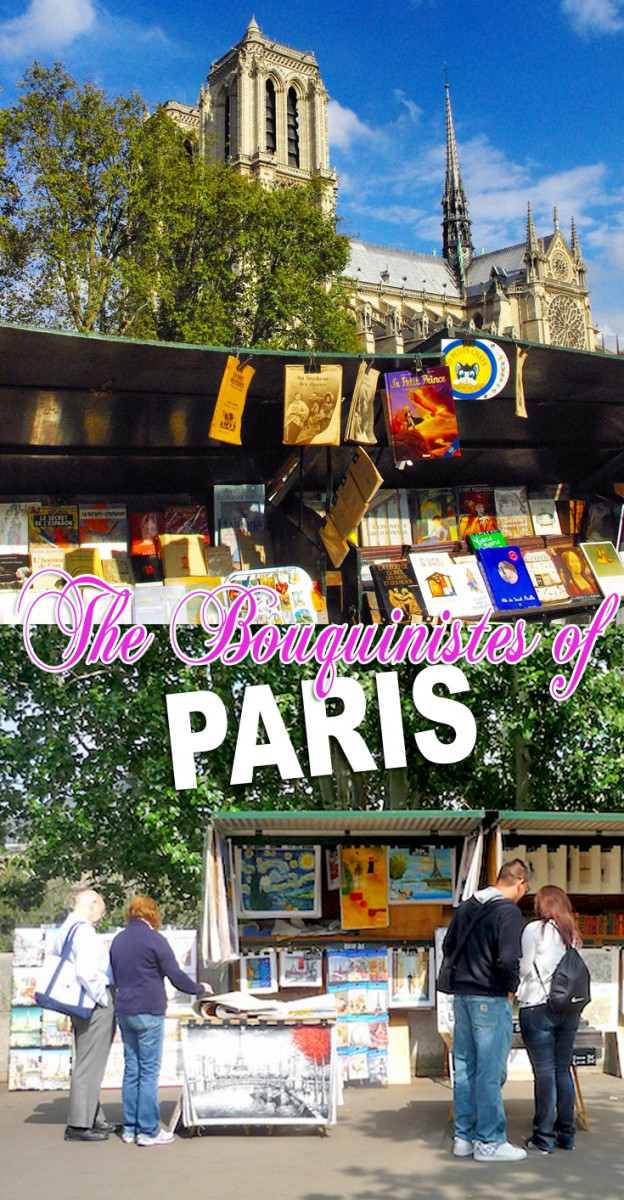

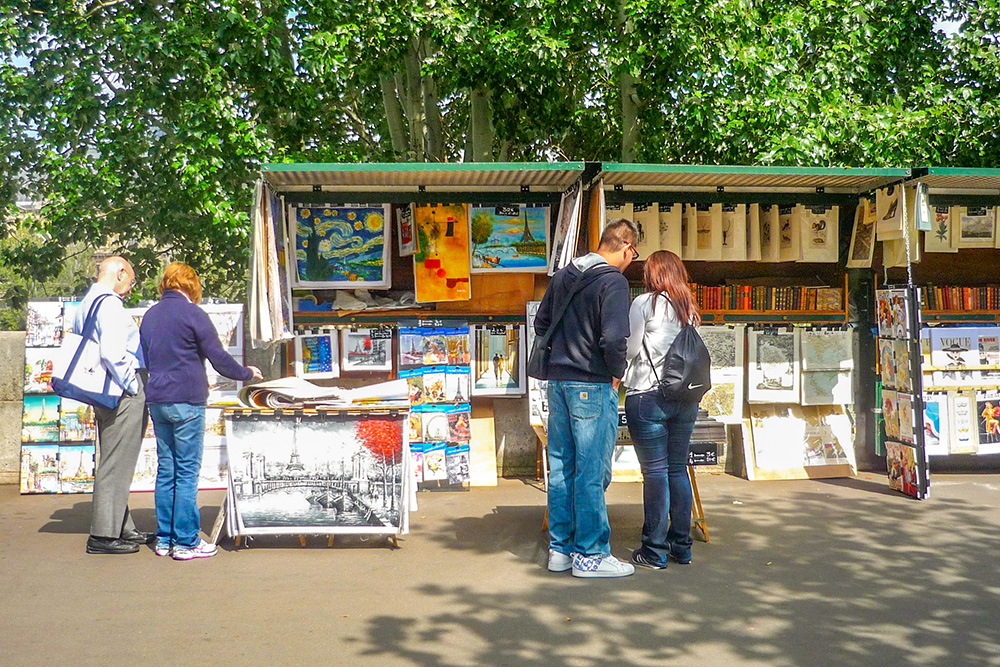


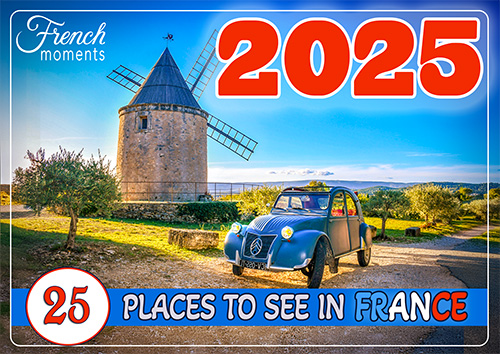
Hello Pierre! Thank you for this wonderful article. Would you be able to point me to the specific law or laws regulating the size, color, etc. of bouquiniste stalls? You mentioned "bylaw 9", but can you share the larger law this is a bylaw of?
Thank you!
Erik
Hello Erik! You will find all the regulations on this pdf > https://cdn.paris.fr/paris/2021/07/16/e00d11ceb9d2ce3a000037439627175e.pdf (sorry, it’s in French, hope you’ll understand it! 😊)
Pierre, the Bouquinistes are among my favorite features of Paris, but I didn't know the history of them or the details that you provided in your article. Thank you for providing so much information about these iconic stalls!
You’re welcome, Ellen! Bon dimanche à toi et à très bientôt ! 👋